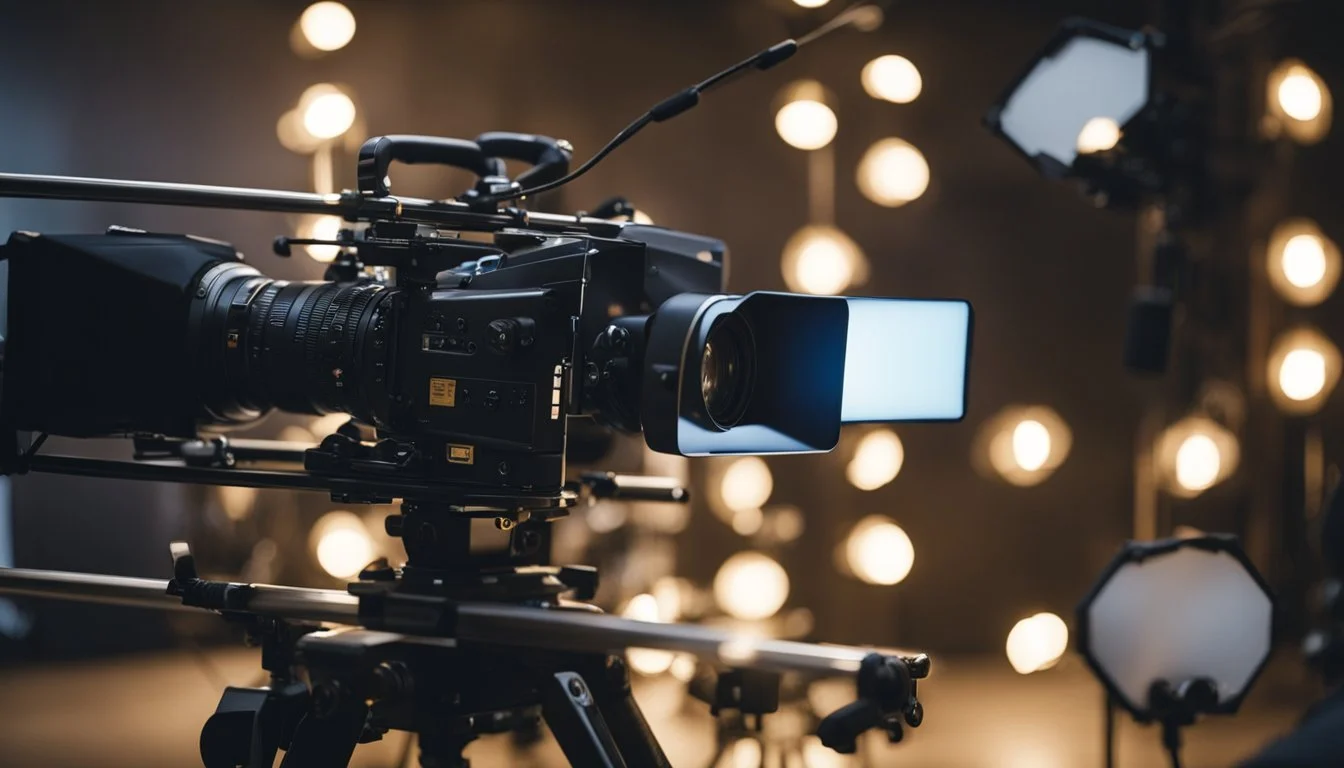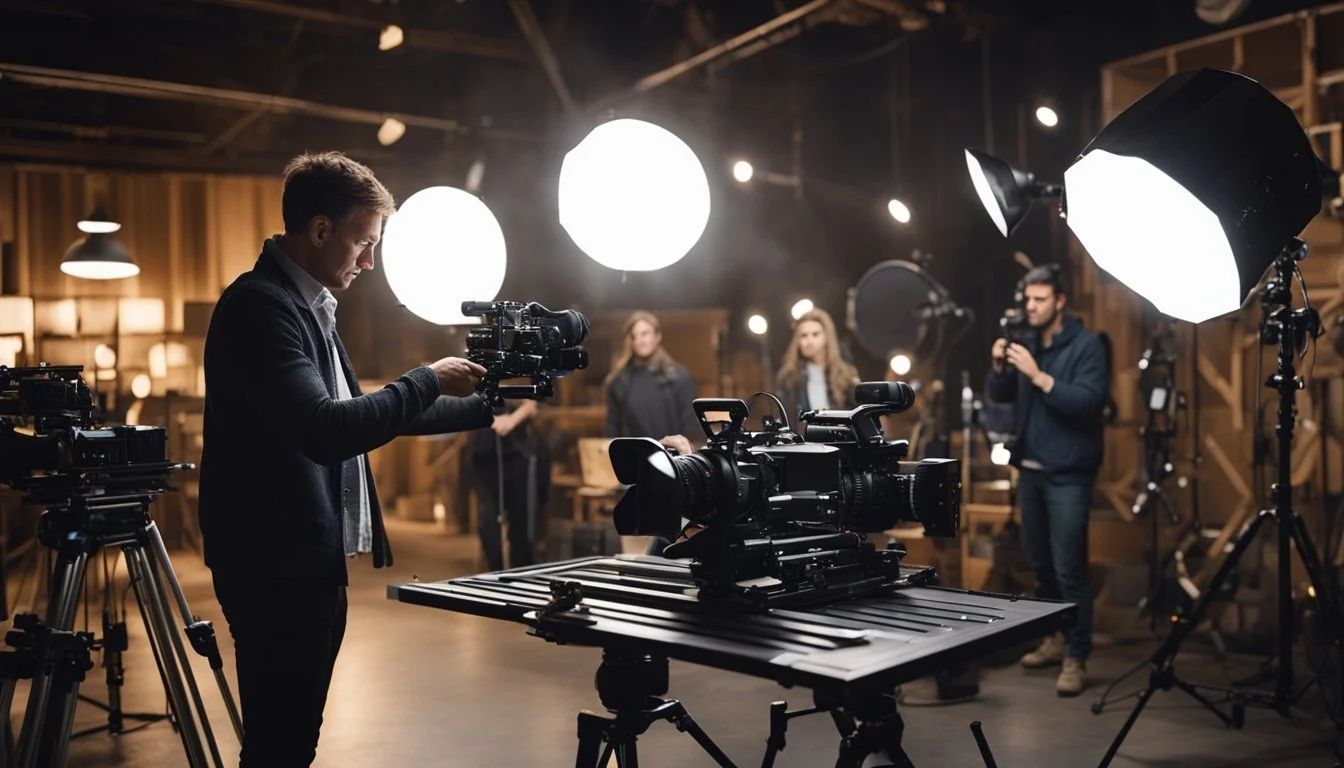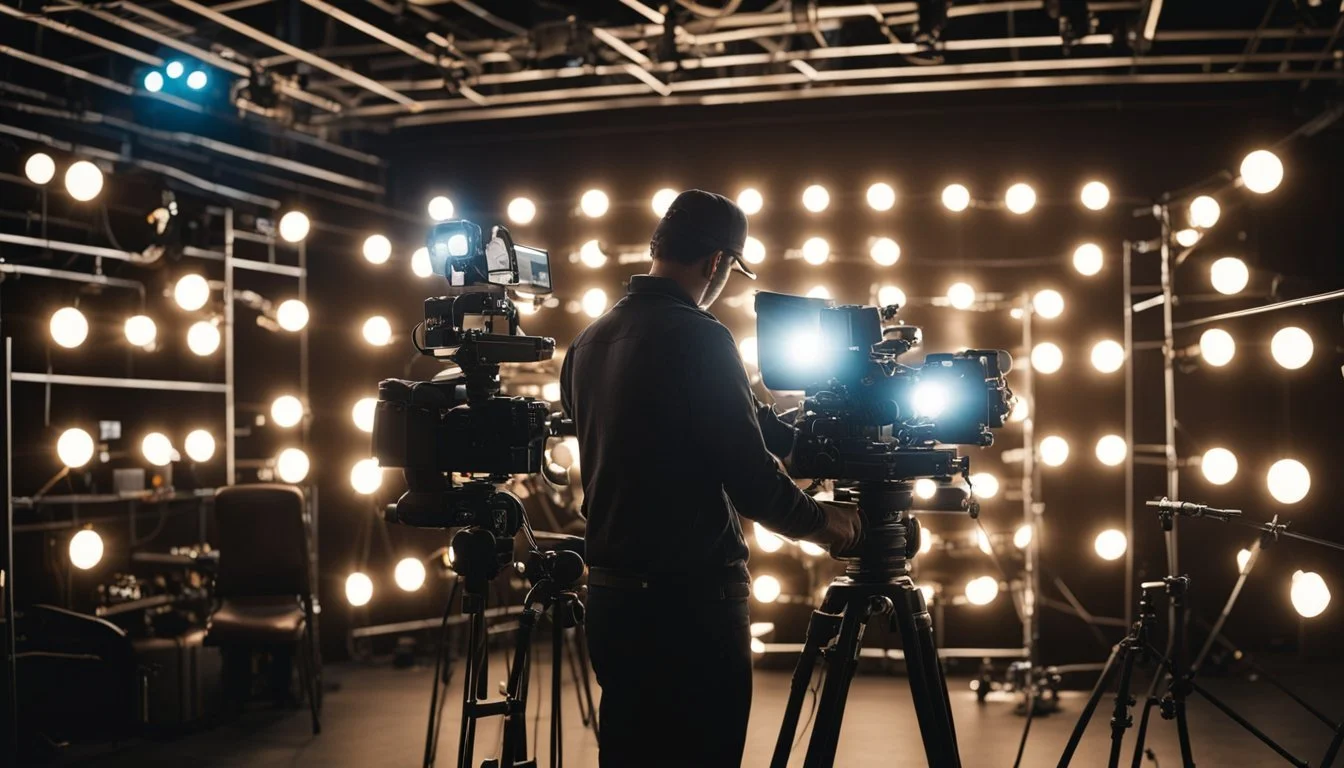The Role of the Gaffer
Designing and Executing the Lighting Plan on Set
A gaffer, the chief lighting technician on a film set, plays a critical role in shaping the visual atmosphere of a production. By working closely with the director of photography, the gaffer designs and executes a lighting plan that enhances each scene’s mood and tone. This meticulous design process ensures the lighting complements the director's vision and enhances the storytelling.
A gaffer's responsibilities extend beyond planning; they also manage the lighting crew, ensure appropriate power distribution, and oversee the actual setup of lighting equipment. The gaffer must possess a blend of technical expertise and creative insight to achieve the desired visual effects. Collaboration with the best boy and other lighting technicians is essential to efficiently bring the lighting plan to life.
Understanding the significant impact of a gaffer's work, it becomes clear why this role is indispensable in any film production. Each carefully placed light and shadow directly influences how the audience perceives and feels about every scene. These behind-the-scenes efforts are what make the magic happen on screen.
Understanding the Gaffer's Role
A gaffer is the chief lighting technician on a film set. They work closely with the director of photography (DP) to bring the desired lighting design to life.
The gaffer's primary responsibility is to design and implement the lighting plan. This involves selecting and arranging lights to set the scene's mood and atmosphere.
Key responsibilities of a gaffer include:
Lighting setup and design
Power distribution management
Safety protocols enforcement
They also collaborate with the DP and other crew members to ensure that all lighting elements match the cinematographic vision.
Equipment used by gaffers:
Lights: Various types like tungsten, LED, and HMI
Grip equipment: Stands, clamps, and arms
Power sources: Generators and power cables
Gaffers lead a team known as the electric crew. This team provides technical support, ensuring all lighting equipment functions correctly.
A gaffer's attention to detail can transform scenes visually, making them pivotal in creating the film’s look and feel.
Lighting Design Concepts
Lighting design on set is a crucial aspect of filmmaking that significantly impacts the mood and aesthetics of each scene.
Color Temperature is a fundamental concept. It refers to the color characteristics of light sources, measured in Kelvin (K). Warmer colors (2000K-3000K) add intimacy, while cooler colors (5000K-6500K) create a clinical or detached feel.
Brightness and Intensity control the illumination levels on set. Adjusting light intensity can emphasize importance or create shadows for a mysterious effect.
Light Placement and Angles determine how light interacts with subjects and objects. Key light, fill light, and backlight are standard positions used to highlight features and create depth.
Diffusion and Softness involve spreading light to reduce harsh shadows. Tools like softboxes, diffusion gels, and bounce boards help in achieving the desired softness.
Shadows and Contrast are manipulated to add drama or texture. High contrast lighting creates sharp shadows, while low contrast lighting offers a softer, more flattering look.
Practical Lighting incorporates light sources that appear within the scene, like lamps or candles. These lights enhance realism and add to the scene's texture.
Rigging and Mounting are techniques for securing lights at various angles and heights. This might involve using C-stands, clamps, and rigging systems to achieve complex lighting setups.
Understanding these concepts allows gaffers to effectively collaborate with directors and cinematographers, ensuring the visual storytelling is impactful and cohesive.
Pre-Production Planning
In pre-production planning, the gaffer collaborates closely with the director of photography (DP) to understand the film's visual requirements. This partnership ensures that the lighting plan aligns perfectly with the director's vision.
Key Activities:
Script Analysis: The gaffer reviews the script to identify crucial scenes requiring specific lighting techniques. This helps foresee technical needs and potential challenges.
Location Scouting: Visits to shooting locations enable the gaffer to evaluate natural light conditions, power sources, and logistical constraints. They record these observations to plan effectively.
Equipment Planning: Based on the lighting design, the gaffer lists necessary equipment. This includes lights, stands, cables, and power distribution systems.
Team Coordination: During this phase, the gaffer assembles and briefs their lighting team, ensuring everyone understands their roles and responsibilities.
| Task | Responsible Team Member | |-----------------------------|------------------------------------| | Creating Lighting Design | Gaffer and DP | | Evaluating Locations | Gaffer | | Equipment Selection | Gaffer | | Briefing Team Members | Gaffer |
Logistics Coordination:
The gaffer works with other departments to ensure that the lighting setup integrates seamlessly into the broader production plan. Coordination with the art department and set designers is vital to avoid conflicts and ensure a smooth workflow.
This structured approach in the pre-production stage lays the groundwork for successful execution on set. The gaffer’s expertise and thorough preparation are crucial to translating the director's vision into a visual reality.
Equipment and Technology
A gaffer relies on a variety of equipment to execute the lighting plan effectively. Key tools include lighting instruments like spotlights, softboxes, and LED panels. These instruments vary in size, intensity, and color temperature to suit different scenes.
Dimmers and lighting control boards are essential for adjusting light intensity. They allow for real-time manipulation of lighting, ensuring consistency across takes.
Power distribution is another critical aspect. Gaffers use equipment like power cables, distribution boxes, and generators to manage electricity on set. Ensuring proper and safe power distribution helps prevent outages and equipment damage.
Rigging gear such as clamps, stands, and trusses are used to position lights. These tools are crucial for achieving the desired angles and effects. Safety is paramount, so equipment is often rated for weight and stability.
Meters like light meters and color meters measure light intensity and color accuracy. These devices help the gaffer ensure that the lighting matches the director of photography's vision.
Finally, software tools for pre-visualization and lighting design are increasingly popular. Programs like CineDesigner or Shot Designer allow gaffers to model lighting setups in virtual environments before actual implementation.
Effective use of technology and equipment is fundamental to a gaffer's success. Each tool plays a specialized role in creating the desired mood and atmosphere on set.
Execution on Set
The gaffer collaborates closely with the director of photography (DP) to implement the pre-designed lighting plan. They ensure that the lighting setup aligns perfectly with the visual requirements of each scene.
Key responsibilities include:
Rigging up light sources: Placement and adjustment of lights to achieve the desired effect.
Managing power distribution: Ensuring safe and efficient power usage on set.
Adjusting lighting levels: Fine-tuning brightness and focus during filming.
A well-coordinated lighting crew is essential. The gaffer leads this team, which includes a best boy—the second-in-command—and other lighting technicians.
Tools used:
Light meters
Gels and diffusers
Dimmer boards
The gaffer directs the setup, ensuring that the lights enhance the atmosphere and tone as planned, creating the right mood for each shot.
Safety Protocols
Safety is paramount on any film set, and the gaffer plays a critical role in ensuring it. The nature of their work involves electrical equipment and complex setups which can present hazards if not properly managed.
Electrical Safety: Gaffers must ensure that all wires are properly insulated and grounded. They should inspect and test all equipment regularly to prevent electrical shocks or fires.
Proper Use of Equipment: Only trained personnel should handle lighting equipment. The gaffer must instruct the crew on the correct operation of lights, stands, and rigging systems to avoid accidents.
Hazard Management: Safety protocols for handling potential hazards such as hot lights and heavy equipment should be clearly defined. This includes wearing protective gloves and ensuring that all light stands are securely placed.
Emergency Procedures: The gaffer should have a clear plan for emergencies. This includes having fire extinguishers readily available and knowing the nearest exits. The crew should be briefed on evacuation protocols.
Communication: Precise communication is vital. The gaffer must keep the team informed about any changes to the setup that may affect safety, ensuring everyone is aware of any potential risks.
Personal Protective Equipment (PPE): The gaffer should enforce the use of PPE such as gloves, safety glasses, and helmets during certain operations to protect the crew from harm.
By adhering to these protocols, the gaffer ensures a safer working environment, allowing the crew to focus on creating the best possible visual outcome.
Post-Production Considerations
In post-production, the gaffer's work plays a critical role in the editing and color grading phases. Properly planned and executed lighting affects how scenes appear on final cuts.
Consistency: Maintaining consistent lighting across multiple shoots ensures seamless editing. Small variations can disrupt the film's continuity.
Color Correction: Accurate lighting facilitates easier color correction. When lighting is consistent, colorists can match tones across scenes effectively.
Reference Footage: Gaffers often provide reference shots to editors. These serve as guides for maintaining the intended light quality during post-production.
The choice of equipment and lighting techniques impacts post-production workloads. High-quality lighting reduces the need for excessive adjustments later on.
Special Effects: Proper lighting is crucial for integrating visual effects. It ensures that CGI elements blend smoothly with live-action footage.
Documenting Settings: Gaffers document lighting setups meticulously. This documentation helps in recreating the same lighting conditions if reshoots are necessary.
Ensuring that lighting complements the director's vision is essential. Any discrepancies in lighting can alter the mood and feel of the final product.
Collaborations: Gaffers work closely with editors and colorists to ensure the original lighting vision is maintained. Effective communication is key to a successful post-production process.
In summary, the gaffer's meticulous planning and execution of lighting contribute significantly to the efficiency and quality of post-production activities.
Professional Development
A gaffer's career starts with gaining comprehensive knowledge about lighting and electrical work on film sets. Formal education in film production or technical schools offers a strong foundation.
Hands-on experience is crucial. Many gaffers begin as lighting assistants or grips, gradually advancing as they acquire skills and experience.
Key Skills for Professional Development:
Technical expertise: Proficiency in light fixtures, power distribution, and safety protocols.
Creative vision: Understanding the director and director of photography’s vision to create the desired mood.
Leadership: Managing and coordinating a team of lighting technicians efficiently.
Important Training and Resources:
Workshops and Courses: Specialized courses on lighting design and technologies.
Certifications: Programs like ETCP (Entertainment Technician Certification Program) offer certification for electrical and rigging skills.
Networking: Joining industry groups and attending film festivals to connect with other professionals.
Career Advancement:
Mentorship: Learning under experienced gaffers.
Portfolio: Building a portfolio showcasing a range of projects.
Continuous Learning: Keeping up-to-date with the latest lighting technologies and techniques.
Professional development for a gaffer involves a blend of formal education, hands-on experience, specialized skills training, and continuous learning. By focusing on these areas, a gaffer can enhance their expertise and advance their career in the film industry.




